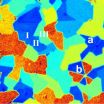(Press-News.org) Partners of patients diagnosed with human papilloma virus (HPV)-positive oropharyngeal cancer (OPC) were no more likely to test positive for oral HPV infection than people in the general population, according to a study published in the April 28 online edition of the Journal of Clinical Oncology. The findings should lessen anxiety that OPC cancer is contagious, at least among long-term partners, and confirms that couples who have been together for several years do not need to change their intimacy or sexual behavior because of the cancer diagnosis.
HPV infection is common among men and women in the U.S., but the overwhelming majority of individuals with the infection will not get cancer. The incidence of HPV-positive head and neck cancers, however, has increased significantly over the past 20 years, particularly among non-Hispanic, white U.S. men.
"Patients with HPV-positive oropharyngeal cancers and their partners often worry about oral HPV transmission and wonder about the cancer risk for their partner. These findings provide assurance that the prevalence of oral HPV infections is not increased among long-term partners and their risk of HPV-OPC remains low," said lead study author Gypsyamber D'Souza, PhD, MPH, MS, an associate professor of Epidemiology at Johns Hopkins Bloomberg School of Public Health. "Couples who have been together for several years have likely already shared whatever infections they have and no changes in their physical intimacy are needed."
The study, the Human Oral Papillomavirus Transmission in Partners over Time (HOTSPOT), is the first large one to examine oral HPV infection among patients with HPV-caused oropharyngeal cancer and their partners. The study included 164 individuals with HPV-OPC and 93 spouses/partners. The OPC patients were predominantly male and partners predominantly female. The median age of OPC patients in this study was 56 years. Oral HPV DNA was collected through a 30-second mouth rinse and gargle at diagnosis and again one year later. The oral rinse samples were tested for 36 different subtypes of HPV, including HPV16, the type responsible for most HPV-OPC cases as well as a variety of other cancers.
HPV DNA was detected in 61 percent of HPV-OPC patients at diagnosis. The prevalence of oncogenic oral HPV among the 87 female partners was 1.2 percent, which is comparable to the prevalence among women in the general population. The prevalence among the small number of male partners assessed in this study was also similar to that among men in the general population. HPV16, the subtype responsible for most cases of HPV-OPC, was detected in 54 percent of HPV-OPC patients but not among the partners.
No oral pre-cancers or cancers were detected in the partners during visual oral exam. However, a history of cervical disease was reported by nine (10.3%) partners, and 2 (11.8%) female cases, and 3 (2.0%) male cases reported a previous partner who developed invasive cervical cancer. This is consistent with research showing that male partners of women with cervical cancer have a two-fold increased risk of tonsillar cancer, and suggests cervical HPV and Pap testing for female partners of HPV-OPC patients is appropriate at the time of diagnosis of HPV-OPC.
While caution with new sexual partners is always appropriate, these findings are reassuring in that they affirm that the risk of HPV-OPC remains low among spouses and long-term partners of people with HPV-OPC.
"Oral human papillomavirus (HPV) infection in HPV-positive oropharyngeal cancer cases and their partners" was written by Gypsyamber DSouza, Neil Gross, Sara Pai, Robert Haddad, Karen Anderson, Shirani Rajan, Jen Gerber, Maura Gillison and Marshall Posner.
INFORMATION:
This study was supported by the Johns Hopkins Richard Gelb Cancer Prevention Award (G.D.) and a research grant from the Early Detection Research Network (EDRN) U01CA117374 (K.S.A.). Clinical Trials number: NCT01342978
Oral Cancer linked to human papillomavirus: No increased HPV risk for long-term partners
Researchers from the Johns Hopkins Bloomberg School of Public Health, in the first study of its kind, note low transmission rates among long-term partners
2014-05-01
ELSE PRESS RELEASES FROM THIS DATE:
Study in Science finds missing piece of biogeochemical puzzle in aquifers
2014-05-01
A study published today in Science by researchers from the U.S. Department of Energy's Argonne National Laboratory may dramatically shift our understanding of the complex dance of microbes and minerals that takes place in aquifers deep underground. This dance affects groundwater quality, the fate of contaminants in the ground and the emerging science of carbon sequestration.
Deep underground, microbes don't have much access to oxygen. So they have evolved ways to breathe other elements, including solid minerals like iron and sulfur.
The part that interests scientists ...
Increased drought portends lower future Midwest crop yields
2014-05-01
Increasingly harsh drought conditions in the U.S. Midwest's Corn Belt may take a serious toll on corn and soybean yields over the next half-century, according to research published today in the journal Science.
Corn yields could drop by 15 to 30 percent, according to the paper's estimates; soybean yield losses would be less severe.
North Carolina State University's Roderick Rejesus, associate professor of agricultural and resource economics and a co-author of the Science paper, says that corn and soybean yields show increasing sensitivity to drought, with yields ...
Tapah downgrades to a depression
2014-05-01
Tapah was downgraded from a tropical storm to a tropical depression and is located 239 nautical miles southeast of Iwo To. Tapah rapidly dissipated due to the effected of strong vertical windshear from the west and a sharp decreased in sea surface temperature. The storm is currently tracking northwest at 10 knots per hour and is expected to recurve to the northeast and accelerate. Maximum wave height is currently 10 feet. The storm will be monitored for signs of regeneration.
NASA captured this image of the storm with the Moderate Resolution Imaging Spectroradiometer ...
Researchers link age, general health and antidepressant use with eye disorders
2014-05-01
Abnormal binocular vision, which involves the way eyes work together as a team, increases dramatically as we age, according to research from the University of Waterloo. The study also found a correlation between this condition, general health and antidepressant use.
As many as 27 per cent of adults in their sixties have an actual binocular vision or eye movement disorder. That number rises to 38 per cent for those over age 80. About 20 per cent of the general population suffers from a binocular vision disorder, which affects depth perception and therefore may increase ...
New Hass avocado research presented at American Society for Nutrition Scientific Sessions
2014-05-01
May 1, 2014 [San Diego, CA] – New research exploring the potential effects of Hass avocado consumption on emerging cardiovascular disease (CVD) risk factors was presented at the American Society for Nutrition Scientific Sessions and Annual Meeting at Experimental Biology 2014 (EB).
Li Wang, PhD Candidate, Pennsylvania State University, presented, "Avocado consumption decreases LDL particle number and small, dense LDL cholesterol in overweight and obese subjects," at the Dietary Bioactive Components: Cardiovascular Effects of Dietary Bioactive Components session on Saturday ...
Edgy look at 2-D molybdenum disulfide
2014-05-01
The drive to develop ultrasmall and ultrafast electronic devices using a single atomic layer of semiconductors, such as transition metal dichalcogenides, has received a significant boost. Researchers with the U.S. Department of Energy (DOE)'s Lawrence Berkeley National Laboratory (Berkeley Lab) have recorded the first observations of a strong nonlinear optical resonance along the edges of a single layer of molybdenum disulfide. The existence of these edge states is key to the use of molybdenum disulfide in nanoelectronics, as well as a catalyst for the hydrogen evolution ...
Some Ohio butterflies threatened by rising temperatures
2014-05-01
The combined heat from climate change and urbanization is likely to reduce the number of eastern swallowtails and other native butterflies in Ohio and promote the spread of invasive relatives, a new study led by a Case Western Reserve University researcher shows.
Among 20 species monitored by the Ohio Lepidopterists society, eight showed significant delays in important early lifecycle events when the two factors were combined—a surprising response that may render the eight unfit for parts of the state where they now thrive.
Butterflies serve as important indicator ...
Whales hear us more than we realize
2014-05-01
RICHLAND, Wash. – Killer whales and other marine mammals likely hear sonar signals more than we've known.
That's because commercially available sonar systems, which are designed to create signals beyond the range of hearing of such animals, also emit signals known to be within their hearing range, scientists have discovered.
The sound is likely very soft and audible only when the animals are within a few hundred meters of the source, say the authors of a new study. The signals would not cause any actual tissue damage, but it's possible that they affect the behavior ...
Penn Vet research identifies compounds that control hemorrhagic viruses
2014-05-01
People fear diseases such as Ebola, Marburg, Lassa fever, rabies and HIV for good reason; they have high mortality rates and few, if any, possible treatments. As many as 90 percent of people who contract Ebola, for instance, die of the disease.
Facing this gaping need for therapies, researchers at the University of Pennsylvania School of Veterinary Medicine teamed with colleagues to focus on identifying and developing compounds that could reduce a virus' ability to spread infection. In two studies published in the Journal of Virology, the researchers have identified several ...
Hubble astronomers check the prescription of a cosmic lens
2014-05-01
Two teams of astronomers using the NASA/ESA Hubble Space Telescope have discovered three distant exploding stars that have been magnified by the immense gravity of foreground galaxy clusters, which act like "cosmic lenses". These supernovae are the first of their type ever to be observed magnified in this way and they offer astronomers a powerful tool to check the prescription of these massive lenses.
Massive clusters of galaxies act as "gravitational lenses" because their powerful gravity bends light passing through them [1]. This lensing phenomenon makes faraway objects ...
LAST 30 PRESS RELEASES:
Making lighter work of calculating fluid and heat flow
Normalizing blood sugar can halve heart attack risk
Lowering blood sugar cuts heart attack risk in people with prediabetes
Study links genetic variants to risk of blinding eye disease in premature infants
Non-opioid ‘pain sponge’ therapy halts cartilage degeneration and relieves chronic pain
AI can pick up cultural values by mimicking how kids learn
China’s ecological redlines offer fast track to 30 x 30 global conservation goal
Invisible indoor threats: emerging household contaminants and their growing risks to human health
Adding antibody treatment to chemo boosts outcomes for children with rare cancer
Germline pathogenic variants among women without a history of breast cancer
Tanning beds triple melanoma risk, potentially causing broad DNA damage
Unique bond identified as key to viral infection speed
Indoor tanning makes youthful skin much older on a genetic level
Mouse model sheds new light on the causes and potential solutions to human GI problems linked to muscular dystrophy
The Journal of Nuclear Medicine ahead-of-print tip sheet: December 12, 2025
Smarter tools for peering into the microscopic world
Applications open for funding to conduct research in the Kinsey Institute archives
Global measure underestimates the severity of food insecurity
Child survivors of critical illness are missing out on timely follow up care
Risk-based vs annual breast cancer screening / the WISDOM randomized clinical trial
University of Toronto launches Electric Vehicle Innovation Ontario to accelerate advanced EV technologies and build Canada’s innovation advantage
Early relapse predicts poor outcomes in aggressive blood cancer
American College of Lifestyle Medicine applauds two CMS models aligned with lifestyle medicine practice and reimbursement
Clinical trial finds cannabis use not a barrier to quitting nicotine vaping
Supplemental nutrition assistance program policies and food insecurity
Switching immune cells to “night mode” could limit damage after a heart attack, study suggests
URI-based Global RIghts Project report spotlights continued troubling trends in worldwide inhumane treatment
Neutrophils are less aggressive at night, explaining why nighttime heart attacks cause less damage than daytime events
Menopausal hormone therapy may not pose breast cancer risk for women with BRCA mutations
Mobile health tool may improve quality of life for adolescent and young adult breast cancer survivors
[Press-News.org] Oral Cancer linked to human papillomavirus: No increased HPV risk for long-term partnersResearchers from the Johns Hopkins Bloomberg School of Public Health, in the first study of its kind, note low transmission rates among long-term partners



